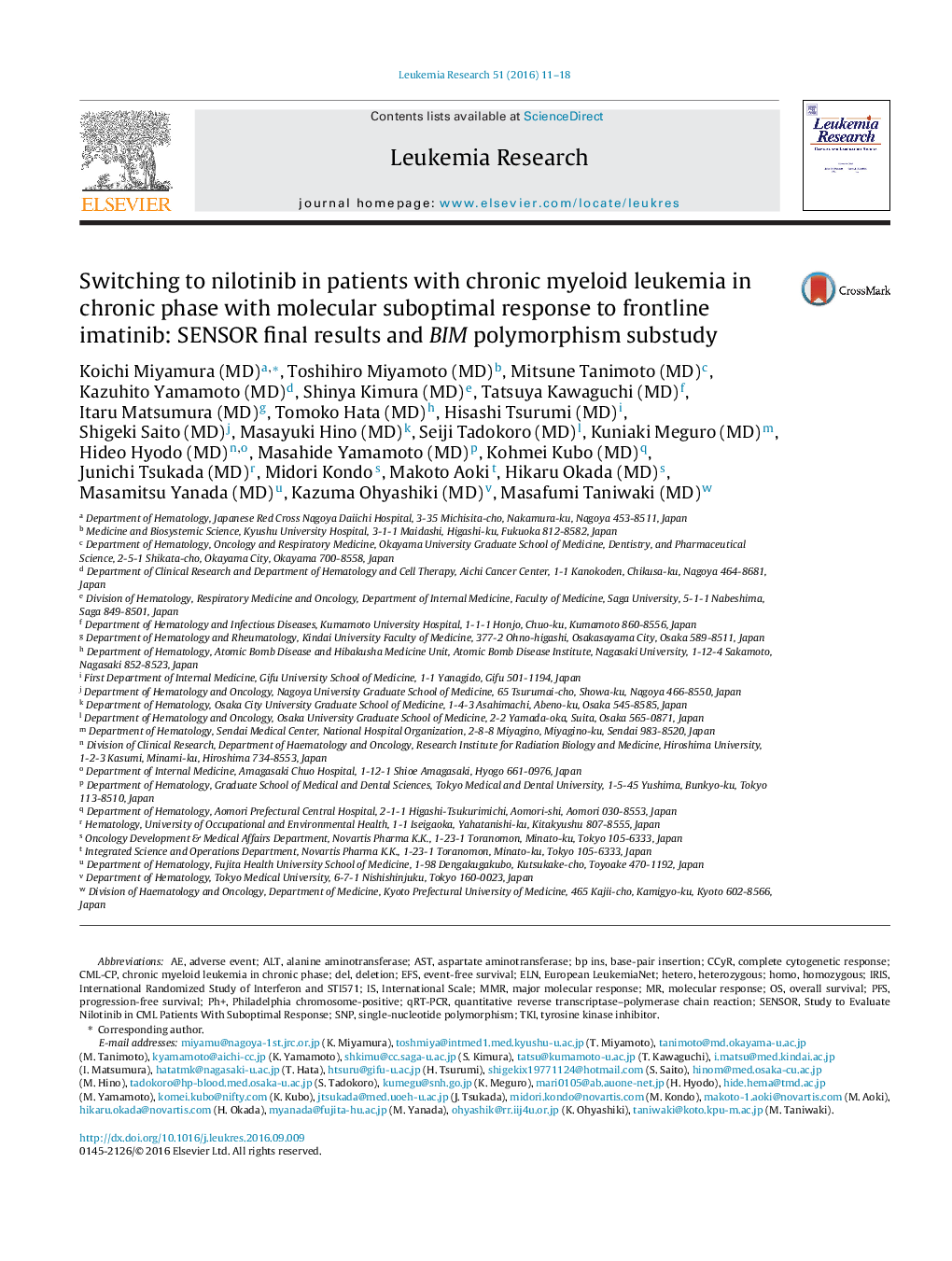| Article ID | Journal | Published Year | Pages | File Type |
|---|---|---|---|---|
| 5527830 | Leukemia Research | 2016 | 8 Pages |
â¢SENSOR enrolled patients with CML without MMR after â¥18 months of imatinib.â¢At 12 months after switch to nilotinib, 51.1% of patients achieved MMR.â¢BIM polymorphisms did not affect MMR achievement after switch to nilotinib.â¢Nilotinib provided benefit to patients with suboptimal response to imatinib.
Optimal management of patients with chronic myeloid leukemia in chronic phase with suboptimal molecular response (MR) to frontline imatinib is undefined. We report final results from SENSOR, which evaluated efficacy/safety of nilotinib in this setting. A substudy assessed whether BIM polymorphisms impacted response to nilotinib. In this single-arm, multicenter study, Japanese patients with suboptimal MR per European LeukemiaNet 2009 criteria (complete cytogenetic response, but not major MR [MMR]) after â¥18 months of frontline imatinib received nilotinib 400 mg twice daily for 24 months. MR, BCR-ABL1 mutations/variants, and BIM polymorphisms were evaluated in a central laboratory. Primary endpoint was the MMR rate at 12 months (null hypothesis of 40%). Of 45 patients (median exposure, 22.08 months), 39 completed the study and six discontinued. At 12 and 24 months, 51.1% (95% CI, 35.8%-66.3%) and 66.7% (95% CI, 51.0%-80.0%) achieved MMR, respectively. Cumulative MMR incidence by 24 months was 75.6%. Of 40 patients analyzed, 10 of 12 (83.3%) with and 17 of 28 (60.7%) without BIM polymorphisms achieved MMR at 24 months. The safety profile was manageable with dose reductions and interruptions. Nilotinib provided clinical benefit for patients with suboptimal response to imatinib, and BIM polymorphisms did not influence MMR achievement. ClinicalTrials.gov: NCT01043874.
